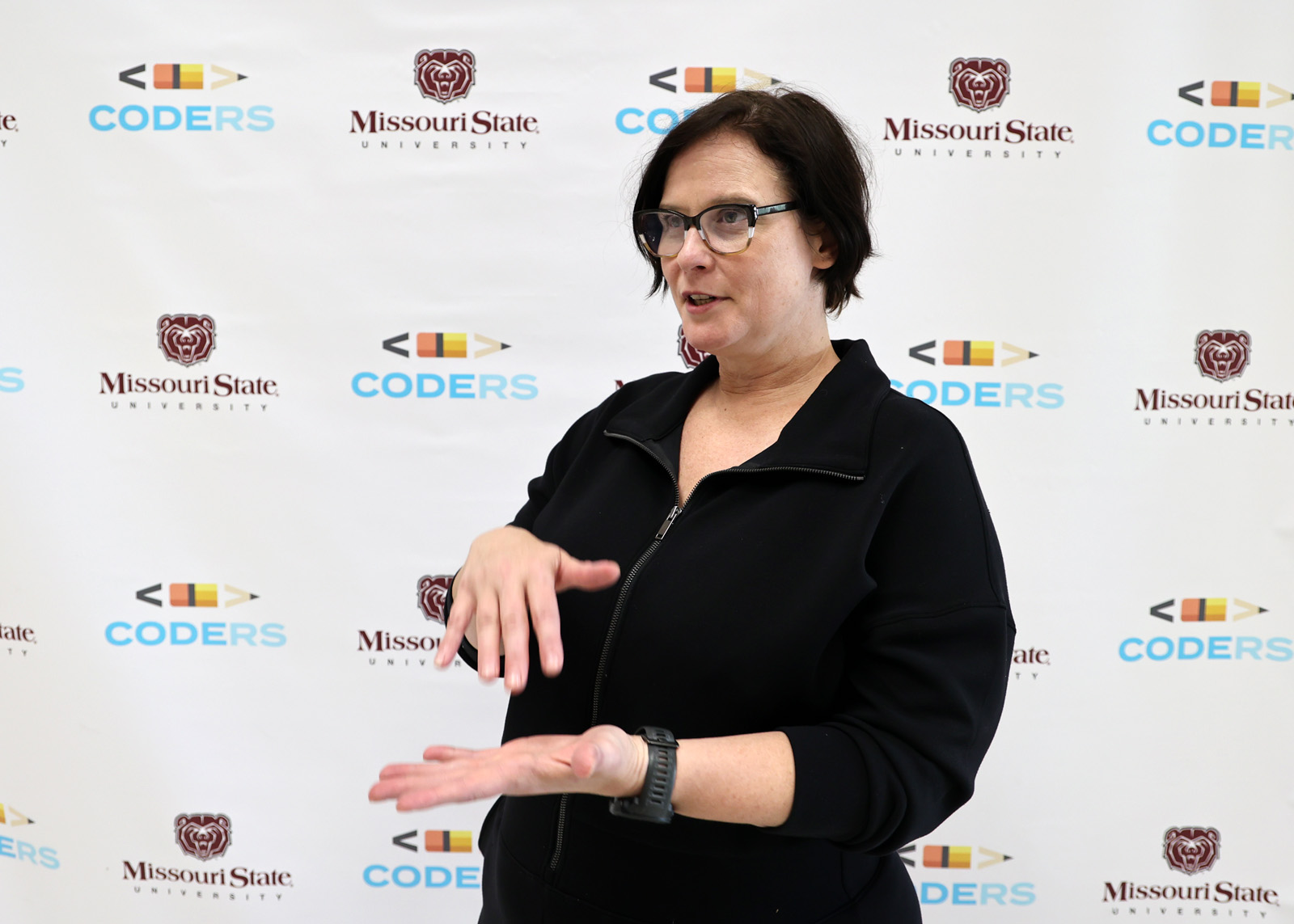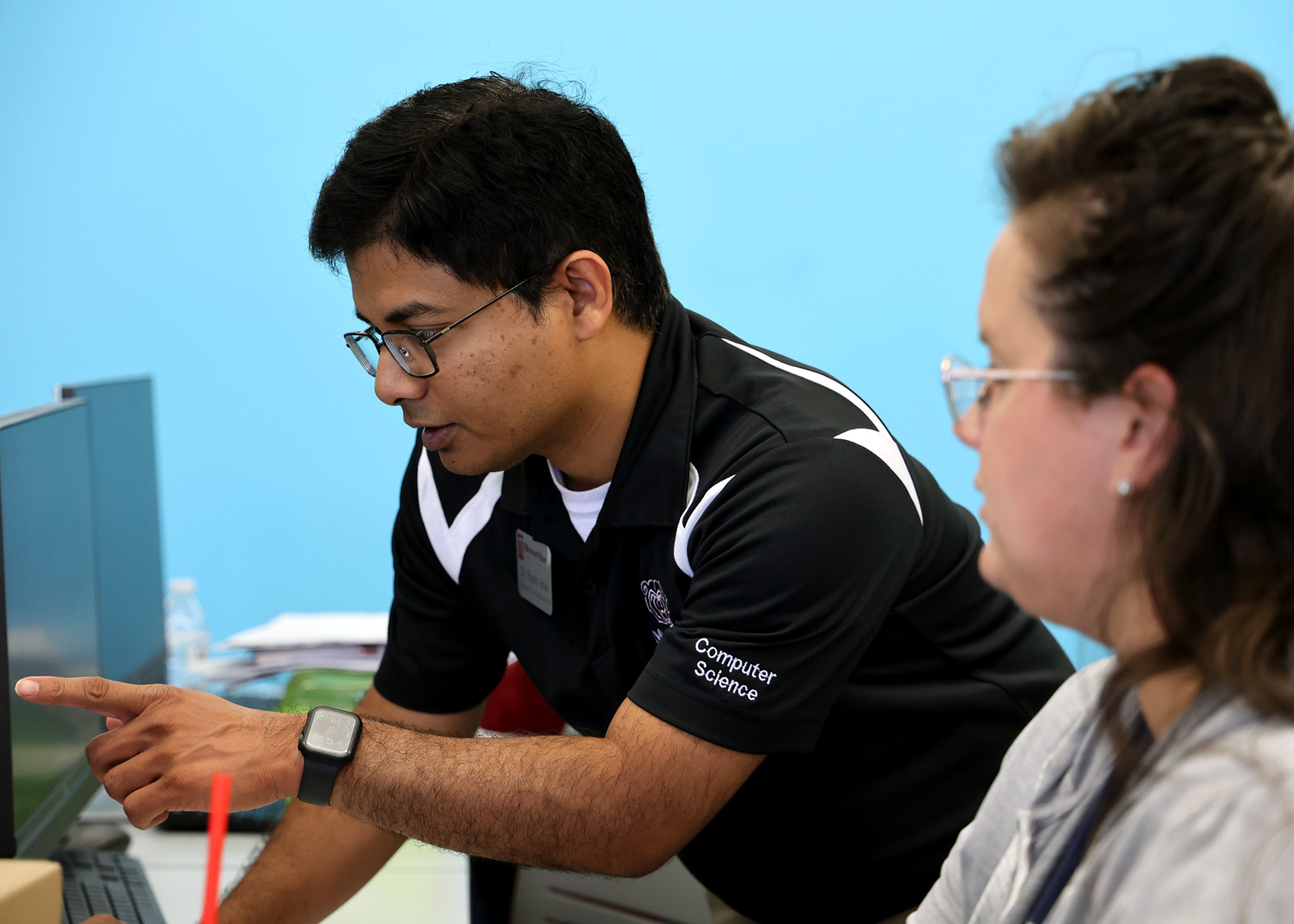The CuteBot is a hit with Jennifer Jackson’s students.
A sixth grade STEAM (science, technology, engineering, arts and mathematics) teacher in the Logan-Rogersville school district, Jackson uses the bug-eyed robot buggy to reinforce several math and science lessons. Students get the opportunity to program it so that it can navigate a track or haul other objects.
It’s more than a chance to teach important lessons, Jackson said.
“It really opens up the kids’ eyes to see how something that they can do in a computer works in the real world,” Jackson said. “They are able to think about what their careers could be. They are able to look at life outside of their small town and see a bigger picture, which is really rewarding.”
Jackson is one of almost 30 teachers participating in a coding workshop at Missouri State University. Scheduled to run from June 4-6, the workshop offers teachers from smaller rural districts the chance to learn how robotics and coding can fit within their lessons.
It is part of MSU’s CODERS Project, an effort to support underserved schools with boosts to computer science, computational thinking, physics and writing for younger students.
$4 million to put robots and programming in classrooms

The five-year program is in its fourth year. Funded by a $4 million grant from the U.S. Department of Education, the program is intended for rural school districts that don’t often receive funding for computer science and/or STEAM programs.
That funding allows for two important advantages: Teachers receive a stipend for their participation, and can receive some of the robotic tech they can use in classrooms.
Part of the “CODERS kits” include Micro:bit, which are pocket-sized computers optimized for programming and integration with robots. The kits also include Cutebots, which are small robotic cars, and XGO Robot Dogs, pooch-shaped bots with articulated and motorized limbs. Both of those robots are compatible with Micro:bit systems.
However, the point is not to introduce a separate robotics curriculum, said Razib Iqbal, associate professor of computer science at MSU. Teachers stick to the curriculum and lessons they would be expected to teach otherwise, but have new tools for those lessons.

“This grant is more geared toward, ‘How do we prepare elementary and middle school teachers to get familiar with logical and computational thinking, and getting familiar with the basics of programming?'” Iqbal said. “So they can implement those concepts in their day-to-day classroom.”
That means a robot could be part of a science experiment or math word problem, he said.
And the classes don’t even have to be related to math or science. Keri Franklin, director of the CODERS Project at MSU, is also a professor in the English department. Franklin said that coding has become a foundation for many industries and studies.
“Coding is a new literacy, a new language,” Franklin said. “I think that at the core of it all, this was an opportunity to support rural schools. We know that they don’t get as much funding as other places, and with how important STEM is to academic achievement, we were able to bring teachers in and buy their classroom supplies.”
Participating teachers came to the workshop in Springfield from as far away as Neosho and Shell Knob. Some of them are new, but others return yearly and help with presentations about what has worked in their classrooms.
Coding is everywhere, even on farms

Franklin said one of the teachers is using robots to have students write stories, then use code to have a robot visualize what the story is about. Another teacher said the robots helped emphasize a science lesson about electricity.
Jackson was one of the presenters Wednesday who shared some of her tips and tricks with other participants. She said that the program offers relevant instruction for her students.
“Coding can be brought into every career, anymore,” Jackson said. “It’s everywhere. We even focus on the farming and ranching aspects, because so many of them, their parents’ jobs are in those industries.”
It’s relevant also because kids and parents have computers, smartphones and tablets. Those kids and parents might be pretty skillful at tapping or clicking things, she said, but this teaches an understanding of what’s going on behind the screen.
“It’s given them the opportunity to understand how it works,” Jackson said. “It gives them an idea of what computational thinking is, what a program is, how does it all start, and how you get to the end product.”
MORE STEAM FROM THE DAILY CITIZEN






